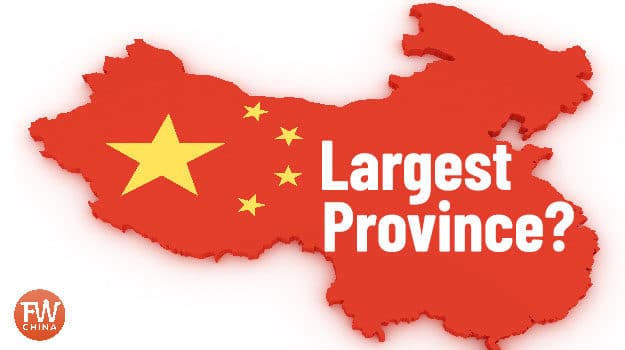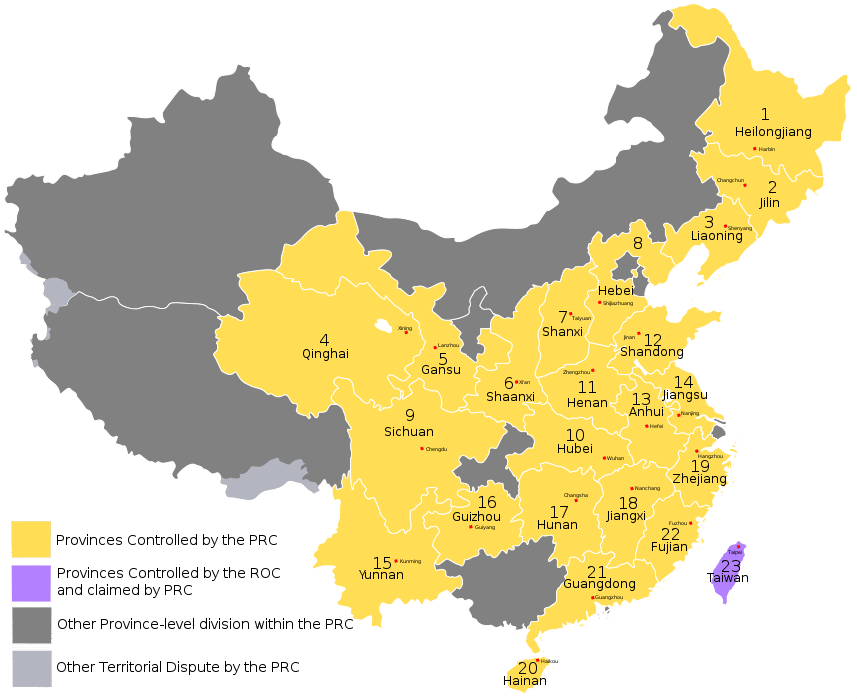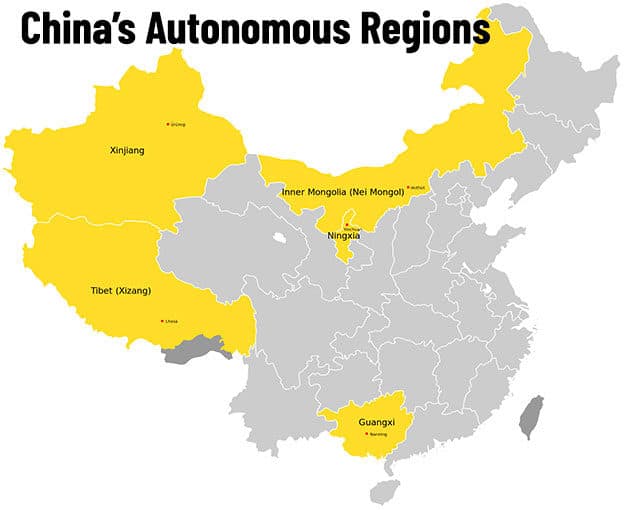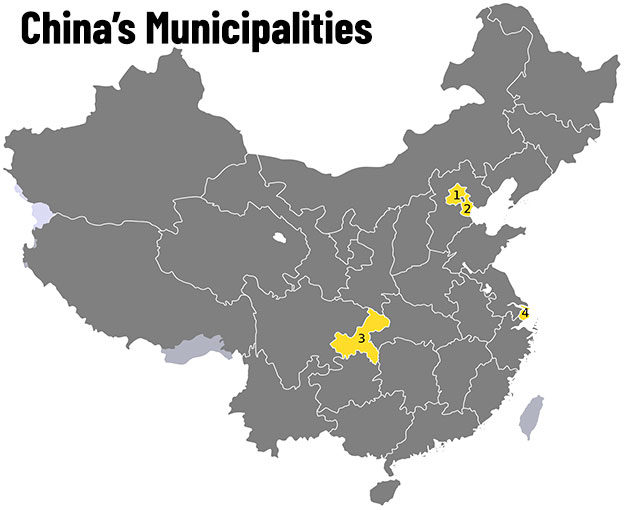What is the Largest Province in China?
What is China’s largest province? You might be surprised to learn that the answer isn’t as simple as it seems. Let me explain with you what a “province” is in China and share with you the answer to this question.

When I first started researching the answer to this question about the largest province in China, I inadvertantly opened a whole can of worms I didn’t know about. I found that – to be fair – this is a trick question.
The answer lies in your understanding that not all parts of China are created equally. I just finished taking a crash course in Chinese Political Geography 101, and I’m lending you my notes to copy.
Understanding Chinese Political Divisions
While in the U.S. all subdivisions are referred to as “states” (well, I guess we do have territories), China has actually divided its ‘state-like’ divisions into 4 different levels:
- Provinces (ex: Sichuan, Shaanxi)
- Autonomous Regions (ex: Xinjiang, Tibet)
- Municipalities (ex: Beijing, Shanghai)
- Special Administrative Regions or SAR’s (ex: Hong Kong, Macau)
It could also be argued that there is a 5th, that of a “claimed territory” such as Taiwan, but since that’s really the only one in that category I’ll just leave that as a special classification. Each of these divisions has minor differences in governmental setup, however all ultimately report to the central government in Beijing.
Chinese Provinces
There are 22 different provinces that make up the majority of Chinese territory. These are usually led by a person referred to as a “secretary”.

Strictly speaking, if we’re dealing with only provinces, China’s largest province is Qinghai (#4 on the left) covering a total of 721,000 km2 (278,000 sq mi).
All maps and square footage facts taken from Wikipedia.
China’s “Autonomous Regions”
There are 5 Autonomous regions in China designated as such because of the large population of a particular minority group. While they retain the right to appoint their own minority governor, the head of this region is the Party Secretary who is always Han Chinese.

Among the autonomous regions, Xinjiang (#1 on the top left) is the largest in China covering 1,660,001 km2 (640,930 sq mi).
China’s Municipalities
A Municipality is basically a huge city that has the same rights as provinces. These areas usually cover an area much larger than the actual city and are governed by a mayor.

The largest municipality is Chongqing (#3 dead center) with an area of 82,300 km2 (31,776.2 sq mi) which, by the way, is bigger than the smallest province of Hainan.
China’s Special Administrative Regions
There are only two SAR’s: Hong Kong and Macau. They’re basically a self-governing nation that report directly to the central government on all issues of foreign policy or national defense, among other things.
The largest of the two SARs is Hong Kong.
So…What is China’s Largest Province?
Now that we have an understanding of the political divisions within China, it will be much easier to answer the question I asked at the beginning.
I’ve already found out that Qinghai is the largest actual province in China, but I think it goes without saying that most people outside of China (and many inside as well) won’t recognize or understand these political subdivisions.
Therefore, the best way to answer the question would be to restate it:
What is the biggest (political) subdivision of China?
The answer to that, of course, is Xinjiang.





